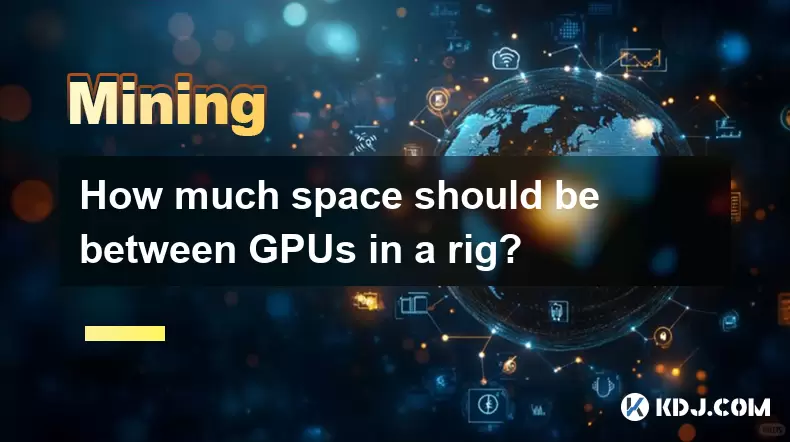-
 Bitcoin
Bitcoin $118100
-0.44% -
 Ethereum
Ethereum $3585
5.43% -
 XRP
XRP $3.434
5.65% -
 Tether USDt
Tether USDt $1.000
0.02% -
 BNB
BNB $743.8
3.89% -
 Solana
Solana $178.7
3.84% -
 USDC
USDC $1.000
0.03% -
 Dogecoin
Dogecoin $0.2381
12.81% -
 TRON
TRON $0.3270
3.62% -
 Cardano
Cardano $0.8315
4.93% -
 Hyperliquid
Hyperliquid $44.51
-4.42% -
 Stellar
Stellar $0.4710
1.52% -
 Sui
Sui $3.896
-2.51% -
 Chainlink
Chainlink $18.09
6.98% -
 Hedera
Hedera $0.2681
9.31% -
 Bitcoin Cash
Bitcoin Cash $516.7
4.83% -
 Avalanche
Avalanche $23.95
6.96% -
 Shiba Inu
Shiba Inu $0.00001490
5.67% -
 UNUS SED LEO
UNUS SED LEO $8.966
0.80% -
 Toncoin
Toncoin $3.294
4.39% -
 Litecoin
Litecoin $105.4
4.69% -
 Polkadot
Polkadot $4.356
5.30% -
 Uniswap
Uniswap $10.29
17.25% -
 Monero
Monero $327.9
-3.04% -
 Bitget Token
Bitget Token $4.942
4.33% -
 Ethena USDe
Ethena USDe $1.001
0.08% -
 Pepe
Pepe $0.00001348
2.17% -
 Dai
Dai $1.000
0.02% -
 Aave
Aave $320.8
0.58% -
 Bittensor
Bittensor $411.8
-4.07%
How much space should be between GPUs in a rig?
Proper spacing between GPUs in a mining rig—typically 1 to 2 inches—enhances airflow, reduces heat buildup, and prevents thermal throttling for better performance and hardware longevity.
Jul 15, 2025 at 02:00 pm

Understanding the Importance of Space Between GPUs in a Mining Rig
When building or optimizing a GPU mining rig, one of the most overlooked yet critical aspects is the physical spacing between the graphics cards. While many users focus on hash rates, power consumption, and cooling fans, the physical layout of the GPUs within the case can significantly impact performance and longevity.
The primary reason for maintaining adequate space between GPUs is thermal management. Graphics cards generate substantial heat during operation, especially when running continuously for cryptocurrency mining. If placed too close together, this heat accumulates, leading to thermal throttling, reduced efficiency, and potentially shortened hardware lifespan.
The Recommended Minimum Gap Between GPUs
There is no universally fixed measurement that applies to all setups, but a general guideline is to maintain at least 1 to 2 inches (2.5 to 5 cm) of space between each GPU in a mining rig. This gap allows for sufficient airflow and helps prevent heat buildup between adjacent cards.
In practice, this often means using PCIe riser cables that are long enough to allow for proper spacing. Some miners use vertical mounting brackets or custom-built frames to ensure each card has room to breathe. The exact spacing may vary depending on:
- The size of the GPUs
- The overall dimensions of the mining case
- The type and number of cooling fans used
Airflow Considerations in GPU Rig Design
Proper spacing isn’t just about leaving gaps; it’s also about how air moves through the system. A well-designed mining rig should incorporate intake and exhaust fans strategically placed to create positive airflow. This ensures that hot air is expelled efficiently while cool air is drawn in to circulate around the GPUs.
Some key points to consider regarding airflow include:
- Using case fans that match the direction of airflow required (intake vs. exhaust)
- Ensuring cable management doesn’t obstruct airflow paths
- Avoiding overcrowding the frame with components that block ventilation
Failure to manage airflow properly can negate the benefits of spacing, resulting in inefficient cooling even if the GPUs are physically apart from each other.
Cooling Solutions That Influence Required Spacing
Different types of cooling solutions affect how much space is needed between GPUs. For example:
- Open-air coolers, which vent heat out the back of the card, require more spacing to avoid recirculating hot air into nearby cards.
- Blower-style coolers, which expel heat directly out of the case, can sometimes allow for slightly tighter spacing since they’re designed to move heat away more effectively.
Additionally, some miners install additional fans directly onto the GPUs or use shrouds to guide airflow more precisely. These methods can help reduce the minimum required spacing, but they still rely on a base level of separation to function optimally.
Hardware Compatibility and Frame Design
The physical design of your mining frame or case plays a significant role in determining how much space you can realistically achieve between GPUs. Frames made from materials like aluminum extrusion offer modularity and flexibility, allowing miners to customize spacing based on their specific needs.
Factors to consider when choosing or designing a frame include:
- The length of PCIe riser cables
- The width of the GPUs being used (some cards are wider than others)
- Whether the frame supports horizontal or vertical GPU mounting
Using riser cables that are too short can force GPUs to be placed closer together than ideal, increasing temperatures and reducing reliability over time.
Common Mistakes When Spacing GPUs
Many novice miners make the mistake of prioritizing compactness over cooling efficiency. While saving space might seem beneficial, especially in smaller rooms or apartments, it often leads to overheating issues that outweigh any spatial advantages.
Another common error is placing GPUs too close to the floor or walls, where dust accumulation and restricted airflow can further impede cooling. Dust acts as an insulator, trapping heat and forcing GPUs to work harder, which can lead to reduced hashrates and potential hardware failure.
Frequently Asked Questions
Q: Can I run multiple GPUs without spacing them apart?
A: While technically possible, running GPUs without proper spacing will likely result in excessive heat buildup, thermal throttling, and reduced mining efficiency. Over time, this can damage the hardware and shorten its usable life.
Q: Do shorter riser cables affect GPU spacing?
A: Yes, shorter PCIe riser cables limit the ability to spread GPUs apart. Longer risers provide more flexibility in positioning and help achieve optimal spacing for cooling purposes.
Q: How does ambient room temperature affect GPU spacing needs?
A: In hotter environments, maintaining larger gaps between GPUs becomes even more important. Higher ambient temperatures reduce the effectiveness of passive cooling, making airflow and spacing crucial for maintaining safe operating temperatures.
Q: Are there cases specifically designed for spaced-out GPU rigs?
A: Yes, several mining-specific cases and open-frame designs are built to accommodate spaced-out GPU configurations. These often feature integrated fan mounts, cable management channels, and modular layouts for optimal thermal performance.
Disclaimer:info@kdj.com
The information provided is not trading advice. kdj.com does not assume any responsibility for any investments made based on the information provided in this article. Cryptocurrencies are highly volatile and it is highly recommended that you invest with caution after thorough research!
If you believe that the content used on this website infringes your copyright, please contact us immediately (info@kdj.com) and we will delete it promptly.
- Coinbase (COIN) Soars to All-Time High: What's Next?
- 2025-07-19 00:30:12
- DOGE, BlockDAG, and Vesting: What's Hot and What's Not in Crypto Right Now
- 2025-07-19 01:10:14
- Crypto Coins with 2025 Potential: BlockDAG and SUI Lead the Charge
- 2025-07-19 01:15:12
- Grass Cutting Hacks: Finding the Right Height for a Lush Lawn
- 2025-07-19 00:30:12
- RWA Token Revolution: Stage Point Europe Leads Crypto Real Estate Launch in Europe
- 2025-07-19 00:50:13
- Token Unlocks and AVAIL: July's Crypto Cliffhangers!
- 2025-07-19 00:50:13
Related knowledge

How are crypto mining profits taxed?
Jul 14,2025 at 12:28am
Understanding Cryptocurrency Mining and TaxationCryptocurrency mining involves validating transactions on a blockchain network and earning rewards in ...

How to keep a mining rig cool
Jul 12,2025 at 01:42pm
Understanding the Importance of Cooling in Mining RigsCryptocurrency mining is an intensive process that places heavy demand on hardware components, p...

How to mine crypto on a gaming PC
Jul 16,2025 at 12:00pm
What is Crypto Mining on a Gaming PC?Crypto mining involves using your computer's processing power to validate transactions on a blockchain network. A...

How to set up a crypto miner
Jul 16,2025 at 09:14am
Understanding Ethereum Gas Fees: What Are They and How Do They Work?Ethereum gas fees are a fundamental aspect of the network, representing the cost r...

Can you mine crypto on a laptop?
Jul 16,2025 at 02:21am
Is It Feasible to Mine Cryptocurrency on a Laptop?Mining cryptocurrency on a laptop is technically possible, but feasibility depends heavily on the ha...

Is crypto mining worth it?
Jul 16,2025 at 01:21am
Understanding the Basics of Crypto MiningCrypto mining refers to the process of validating transactions on a blockchain network by solving complex mat...

How are crypto mining profits taxed?
Jul 14,2025 at 12:28am
Understanding Cryptocurrency Mining and TaxationCryptocurrency mining involves validating transactions on a blockchain network and earning rewards in ...

How to keep a mining rig cool
Jul 12,2025 at 01:42pm
Understanding the Importance of Cooling in Mining RigsCryptocurrency mining is an intensive process that places heavy demand on hardware components, p...

How to mine crypto on a gaming PC
Jul 16,2025 at 12:00pm
What is Crypto Mining on a Gaming PC?Crypto mining involves using your computer's processing power to validate transactions on a blockchain network. A...

How to set up a crypto miner
Jul 16,2025 at 09:14am
Understanding Ethereum Gas Fees: What Are They and How Do They Work?Ethereum gas fees are a fundamental aspect of the network, representing the cost r...

Can you mine crypto on a laptop?
Jul 16,2025 at 02:21am
Is It Feasible to Mine Cryptocurrency on a Laptop?Mining cryptocurrency on a laptop is technically possible, but feasibility depends heavily on the ha...

Is crypto mining worth it?
Jul 16,2025 at 01:21am
Understanding the Basics of Crypto MiningCrypto mining refers to the process of validating transactions on a blockchain network by solving complex mat...
See all articles

























































































